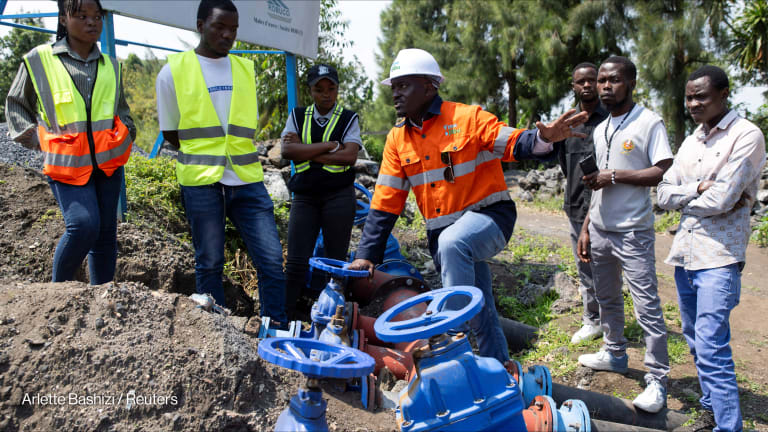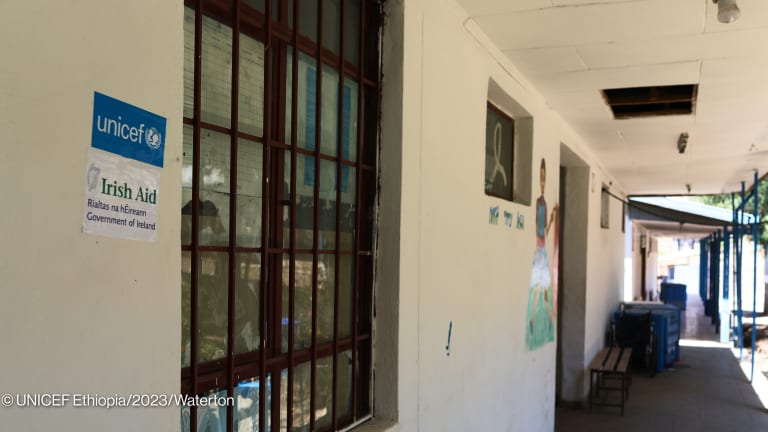Inside the finances of the United Nations
Established in 1945, the U.N. has cemented its importance in the realization of the global development agenda.
As governments gear up for the upcoming 79th session of the United Nations General Assembly, Devex took a deep dive into the world’s largest intergovernmental organization to understand its financial structure — from its revenue sources, top-earning agencies, major donors, to how it spends its billions. Established in 1945 at the end of the Second World War, the U.N. has proven its importance in the realization of the global development agenda. It implements its activities through specialized agencies, programs, and funds, each performing specific functions and mandates. In this analysis, we used the 2022 financial statistics data from the U.N. System Chief Executives Board for Coordination, CEB, to see the trends in the U.N.’s incomes and spending. Although there are figures for 2023 and 2024 elsewhere, CEB provides the most comprehensive overview of the U.N. system’s financial flows. How is the UN funded? The bulk of the U.N.’s money comes from its 193 member states' contributions, which are provided either as assessed contributions or voluntary contributions. Assessed contributions are mandatory payments for the regular budget and peacekeeping operations budgets, or PKOs. The U.N. uses a formula that considers the members’ capacity to pay to determine how much they will give. On the other hand, voluntary contributions are donations to U.N. funds, programs, and specialized agencies. Many agencies, including the United Nations Development Programme, UNICEF, and World Health Organization, rely mostly on voluntary contributions. Voluntary contributions are further classified into two categories: earmarked contributions, allocated for specific recipients, sectors, programs, or themes, and unearmarked contributions, which the U.N. agencies can use at their own discretion. Lastly, a small portion of revenue comes from what the agencies earn from providing services. This is particularly the case of the United Nations Office for Project Services, or UNOPS, whose entire income in 2022 came from service provision. Overall, the U.N. received $74.3 billion in 2022 — up 12.8%, in cash terms, from 2021. Around $55.7 billion, or 75%, came from voluntary contributions — 19% more, in cash terms, than the previous year. Of this, $49.6 billion went to earmarked contributions and $6.1 billion to unearmarked contributions. Another $13.3 billion, or 18% of the total, went to assessed contributions, while the remaining $5.2 billion, or 7% of the total, went to earned incomes. Which agencies received the most funding? Just four agencies accounted for half of the U.N. system’s total income in 2022. The biggest earner was the World Food Programme, with $14.4 billion, or 19.4% of the total. The U.S. upped its voluntary contributions to WFP by $3.4 billion, which drove a 47.6% cash-term increase in the agency’s income from 2021. UNICEF ranked next, with $10.3 billion, or 13.9% of the total — a 20.5% rise from 2021. Its top donors were the U.S., with $1.8 billion, and Germany, with $1.1 billion. The U.N. Secretariat followed, with $7.2 billion, 9.6% of the total and 3% more than its previous revenue. The U.S. was also its largest contributor, with $708.1 million, followed by China, with $479.7 million, and Japan, with $256.5 million. The United Nations Department of Peace Operations received $6.8 billion, or 9.1% of the total. But unlike the three other top agencies, its income went down by 6.1% from 2021. The U.S., China, and Japan were the largest donors, with $1.7 billion, $1.1 billion, and $526.4 million contributions respectively. Who are the largest donors to the UN? The United States is the overall largest donor to the U.N. system, contributing $18.1 billion — more than a third of the total in 2022. This represents a 44.8% increase from 2021. Germany ranked next, with $6.8 billion, or 12.7% of the total. Then Japan, with $2.7 billion, the U.K. and China, with $2.1 billion each, and Canada, with $2 billion. The European Union allocated the largest portion among multilaterals, worth $3.5 billion, similar in cash terms, to its previous contribution. The World Bank ranked next, with $1.9 billion, U.N. Office for the Coordination of Humanitarian Affairs appeals, with $841.5 million, and the Global Environment Facility, with $773.6 million. Altogether, multilaterals contributed $11.4 billion — 15.3% of the U.N.’s total income in 2022 and 49.6% more than the combined contributions of multilaterals in 2021. How did the agencies spend the money? Overall, the U.N. spent $67.4 billion in 2022, up 11.5% from the previous year. CEB data classifies expenses into four categories. Humanitarian assistance accounted for the largest bulk, worth $31.1 billion, or 46.1% of the U.N. agencies’ total expenses in 2022. This is a 23.3% increase from 2021. Among agencies, WFP spent the most on humanitarian assistance, worth $11.9 billion. The UN Refugee Agency, or UNHCR, ranked next, with $5.4 billion, UNICEF, with $4.9 billion, and U.N. Secretariat, with $2.9 billion. Development assistance was the second priority, receiving $20.1 billion, or 29.9% of the total. Among the top spenders in this category were UNDP, with $4.8 billion, UNICEF, with $3.6 billion, and the Pan American Health Organization, or PAHO, with $1.4 billion. Peace operations followed, with $8.7 billion. Only three agencies spent on this category: DPO, with $7.1 billion, U.N. Secretariat, with $1.3 billion, and UNOPS, with $246.4 million. Finally, $7.5 billion went to the global agenda and specialized assistance. The top spenders included WHO, with $1.7 billion, U.N. Secretariat, with $1.6 billion, and the International Atomic Energy Agency, or IAEA, with $687 million. The UN’s geographic and sectoral priorities Afghanistan was the U.N.’s top recipient country in 2022, with $3.5 billion, or 5.2% of the total expenses. WFP was the top spender in Afghanistan, with $1.6 billion, then UNICEF, with $648.7 million, U.N. Secretariat, with $413.2 million, and UNHCR, with $215 million. The other priority countries were South Sudan and Yemen, with $2.7 billion each, Somalia, with $2.3 billion, the Democratic Republic of the Congo and Ukraine, with $2.2 billion each. Meanwhile, around 20.9% of U.N.’s spending, worth $14.1 billion, went to global and regional activities. CEB data also classifies expenses based on the Sustainable Development Goals. The data shows that $13 billion went to SDG 2 — zero hunger. Another $11.8 billion went to SDG 16 — peace, justice, and strong institutions. Other priorities were SDG 3 – good health and well-being — with $8.7 billion, SDG 1 — no poverty — with $5 billion, and SDG 17 — partnerships for the goals — with $4.5 billion. Try out Devex Pro Funding today with a free 5-day trial, and explore funding opportunities from over 850 sources in addition to our analysis and news content.
As governments gear up for the upcoming 79th session of the United Nations General Assembly, Devex took a deep dive into the world’s largest intergovernmental organization to understand its financial structure — from its revenue sources, top-earning agencies, major donors, to how it spends its billions.
Established in 1945 at the end of the Second World War, the U.N. has proven its importance in the realization of the global development agenda. It implements its activities through specialized agencies, programs, and funds, each performing specific functions and mandates.
In this analysis, we used the 2022 financial statistics data from the U.N. System Chief Executives Board for Coordination, CEB, to see the trends in the U.N.’s incomes and spending. Although there are figures for 2023 and 2024 elsewhere, CEB provides the most comprehensive overview of the U.N. system’s financial flows.
This story is forDevex Promembers
Unlock this story now with a 15-day free trial of Devex Pro.
With a Devex Pro subscription you'll get access to deeper analysis and exclusive insights from our reporters and analysts.
Start my free trialRequest a group subscription Printing articles to share with others is a breach of our terms and conditions and copyright policy. Please use the sharing options on the left side of the article. Devex Pro members may share up to 10 articles per month using the Pro share tool ( ).
Miguel Tamonan is a Senior Development Analyst at Devex, where he analyzes data from public and private donors to produce content and special reports for Pro and Pro Funding readers. He has a bachelor’s degree in Political Science with a Major in International Relations from the Polytechnic University of the Philippines.








